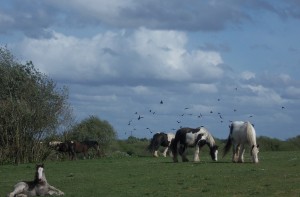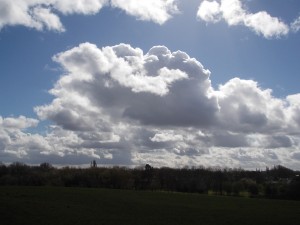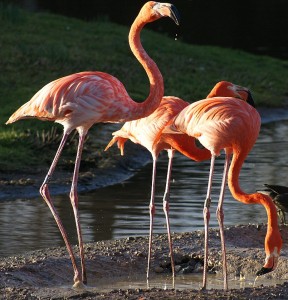Down at Wraysbury, I wondered what I might see now the spring migration is well and truly under way. Last year there was a single Cuckoo, a rare treat. And perhaps there would be a good number of warblers already.
The winter ducks had all vanished from the lakes, all bar a pair of shy Gadwall right at the back. There were indeed quite a few warblers about – Chiffchaffs, Blackcaps, Cetti’s, Whitethroats, Garden Warblers and one or two Willow Warblers, all singing lustily. I listened out for a Sedge Warbler to make it Seven but couldn’t find one. Still, not bad going.
But over the lake there was a high call: Pik! Cheer! Cheeri-Cheeri-Cheeri-Cheer! A pair of Common Terns, the first of the year: graceful white ‘sea swallows’, marvellously buoyant in flight. But no – there were two pairs .. no, five birds … no, seven in all. They wheeled and shrieked high above, swooped and delicately took insects from the water surface. Comically, one or two of the Black-Headed Gulls tried to do the same: they looked like tubby Sunday footballers trying gamely to keep up with their mates, flapping heavily, looking rotund and clumsy – yet, these are the same birds that gracefully wheel about the tourists at the Round Pond in Kensington Gardens, skilfully catching pieces of bread tossed into the air at any speed, any angle, any distance. It’s just that the terns are seven times more agile. Their forked tails divide into streamers as long as the rest of the tail; their wings almost pure white below, smooth ash-grey above. Do they make a summer? Almost.
Also swooping over the water was one Swallow, the first of the year for me; and about eight House Martins were hunting above the treetops. Some Alder Flies flew past; perhaps they are emerging from the water, providing a feast for the terns.
One green female Banded Demoiselle perched on some nettles; she too is the first of her kind – indeed, the first dragonfly of any kind – for me this year. And a solitary Greylag goose stood in the shallows, an unusual sight here.

Around the horses on the green grassy hill that used to be the dump, a flock of Jackdaws with some Carrion Crows, benefiting from the insects around the horses; and a second flock, more of a surprise, of Stock Doves. They are notoriously under-reported, people just assuming they are Feral Pigeons or Wood Pigeons without looking to check. They all had the same pattern, and none of them had white wing flashes.
Walking down to the road, the narrow path was carpeted with small teardrop-shaped white petals: Hawthorn flowers, May blossom.


